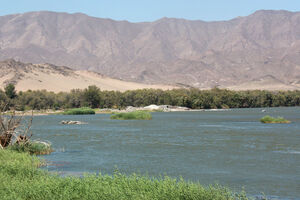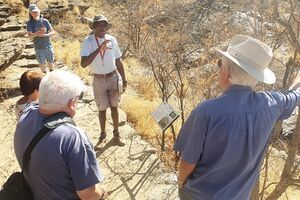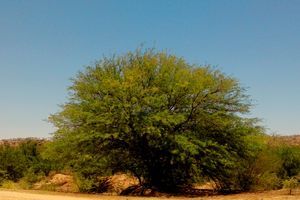
It is considered the mammal most affected by illegal trade worldwide: the pangolin. In Namibia, it ranks second only to the rhino in terms of the number of registered cases of poaching, transport and trade.
The government therefore wants to strengthen the protection of pangolins. This was announced by the Ministry of Environment, Forestry and Tourism (MEFT) on Saturday. The current occasion: World Pangolin Day, which is celebrated every year on the third Saturday in February.
MEFT has developed a National Management Plan in cooperation with the Namibian Pangolin Working Group. It contains measures to curb poaching and trade as well as the loss of habitat. The plan would be presented this year.
According to the MEFT, the measures include stricter laws and consistent enforcement. They also want to work even more closely with organisations such as the Pangolin Conservation and Research Foundation (PCRF). Over the past four years, 35 pangolins have been jointly rescued, released and monitored.
Heavy penalties for pangolin trafficking

The ministry emphasised that the illegal trade in wild animals is already subject to high penalties. A conviction can result in up to nine years in prison or fines of up to 800,000 Namibia Dollar (currently a good 41,500 euros; amount according to the current exchange rate, 1 ZAR = 1 N$).
Nevertheless, the situation is alarming. Since 2018, MEFT has registered around 570 cases of poaching or trafficking of pangolins. After a decline during the coronavirus pandemic, the trend has been rising again since 2023.
However, unlike the rhino, there are no international syndicates at work, Namibian.org learnt from experts. There is a great demand for pangolins in Namibia itself. The animal's scales are considered a traditional remedy and in some cases an aphrodisiac, while the meat is a delicacy.
Many ground pangolins also fall victim to electric farm fences. The drought is also very hard on the animals. The loss of habitat, which applies to all wild animals, is an additional factor.
All eight pangolin species are vulnerable
There are eight species of pangolin worldwide, four of which are found in Asia and four in Africa. In Namibia you find the ground pangolin (Smutsia temminckii, also known as Manis temminckii, see Wikipedia article). It feeds on ants (here is a videoclip of a pangolin digging, published on the Facebook page of the Namibian private radio station Radiowave FM).
All eight species are considered vulnerable or even critically endangered (see classification by the International Union for Conservation of Nature (IUCN)). They have been listed in Appendix I of the Convention on International Trade in Endangered Species of Wild Fauna and Flora (CITES) since 2016 (see report by the U.S. Fish & Wildlife Service). This means that trade in all eight species of pangolins is prohibited.
Nevertheless, pangolins are among the most traded mammals worldwide (see article on Wikipedia). Experts estimate their share of the illegal trade in wildlife products at around 20 per cent.
In Namibia, the Pangolin Conservation and Research Foundation (PCRF) is committed to the protection and research of the ground pangolin. You can also support the work of the PCRF by 'adopting' a pangolin.

Sven-Eric Stender





.png?width=82&height=85&name=Navigate%20Namibia-03%20(1).png)
SUBMIT YOUR COMMENT